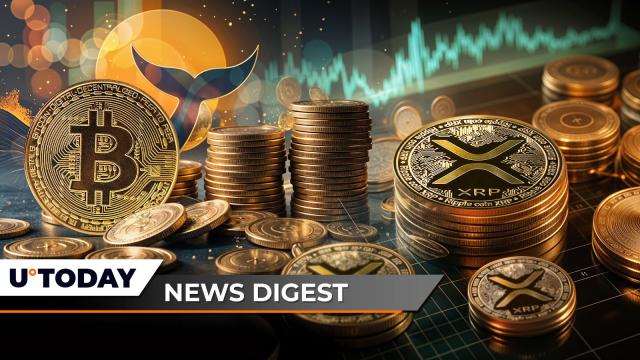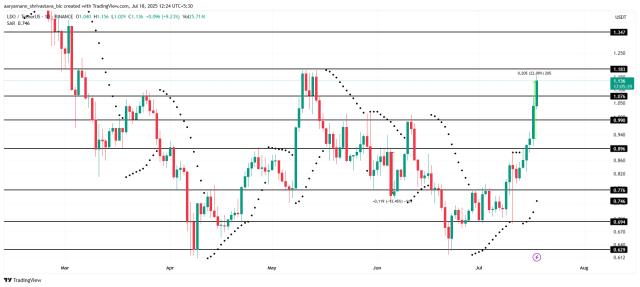

Due to the softening of the U.S. government's tough trade policy rhetoric, the SPX index closed with a nine-day winning streak for the first time in over 20 years last week, recovering all the losses since the Liberation Day crash.

Both China and the United States are continuing to move towards restarting trade negotiations and easing relations, with both sides recently adjusting their trade departments and negotiators. China stated: "The U.S. side has recently actively conveyed messages through various channels, hoping to engage in talks with China," to which China responded that it is "currently conducting an assessment".
The latest Bloomberg survey shows that the market generally believes that the Trump administration will ultimately respond to market changes, despite previously attempting to blame issues left by Biden. The market believes that the government has reached a "pain threshold" willing to temporarily suspend tariff offensives.

In addition to positive signals in trade, the non-farm employment report released last Friday was unexpectedly strong, further boosting market risk appetite and concluding a week of robust economic data, showing that despite negative sentiment, the U.S. economic fundamentals remain solid. In April, 177,000 new jobs were added, with the unemployment rate maintained at 4.2%, temporarily alleviating concerns about an imminent economic recession. However, the true impact of tariff policies may only be reflected in the data from May to June.

Moreover, based on the average pullback levels of past economic slowdowns, the current stock market rebound implies only about an 8% possibility of economic recession, which is far lower than economists' estimates or the levels implied by the fixed income market.

In the fixed income market, the yield curve has flattened, falling back to February levels, with the market expecting only about a 30% chance of a rate cut in June, and approximately 3 rate cuts projected for the entire year.

On the other hand, recent actual inflation data continues to decline, and positive signals from multiple central banks about maintaining U.S. bond positions have restored normal functioning to the U.S. bond market.

In the cryptocurrency market, overall volatility was low over the past week, with prices remaining stable. Although BTC briefly recovered to the 96k level, it subsequently faced short-term profit-taking pressure. The volatility curve has flattened, indicating a lack of clear market direction, with actual volatility falling to the year's lowest point.
If no major changes occur in macro assets, we expect cryptocurrency prices to continue consolidating in the short term, with a potentially bullish tendency in the medium term.

Over the past two weeks, although not large in scale, ETF fund inflows have remained positive, with cumulative net inflows almost exceeding the high point from earlier in the first quarter.

Looking ahead, with SPX successfully recovering losses since Liberation Day, the "easy" part of the rebound has been realized, and prices have re-entered the technical resistance zone. Historically, "bear market" rebounds (if this qualifies) are the most unstable and irrational for observers. However, this rapid rebound has also triggered some positive and negative divergence signals that may push prices back to January's highs.

We anticipate that this week's FOMC meeting will not significantly impact the market, and there is currently no clear directional judgment. Price movements may be as unpredictable as a coin toss. Ultimately, it will return to corporate profit growth performance, which will further depend on economic realities and the subsequent impact of tariffs.
So far, the situation looks good. First-quarter profit growth is expected to be close to a 13% year-on-year increase, almost double the initial expectations of the earnings season, and will be the second consecutive quarter of double-digit growth.

If forced to make a choice, we believe the market's "pain trade" is still further price appreciation, as most observers are still fixated on the narrative that tariffs are "a done deal, irreversible". However, be cautious of the "dead cat bounce" in a bear market rally!

You can freely use the SignalPlus trading trend indicator feature at t.signalplus.com/news, which uses AI to integrate market information, making market sentiment clear at a glance. If you want to receive our updates in real-time, please follow our Twitter account @SignalPlusCN, or join our WeChat group (add assistant WeChat, please remove the space between English and numbers: SignalPlus 123), Telegram group, and Discord community to interact with more friends.
SignalPlus Official Website: https://www.signalplus.com








